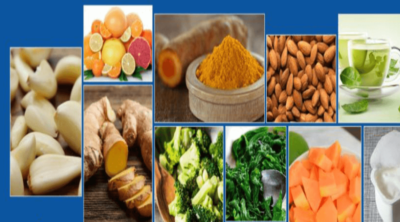
Tannins are naturally-occurring polyphenols present in many foods. NutriNeat provides a list of foods containing tannins.
Did You Know?
The bitter, astringent taste of tannins, especially in unripe fruits, is a defense mechanism by plants to ward off predators and protect against parasites. These chemicals are also responsible for the color of the flowers and the leaves during autumn.
Tannins are bitter, water-soluble plant polyphenols that are responsible for binding and precipitating proteins. They are found in plants, barks, seeds, and fruit skins. These ubiquitous plant substances are also responsible for imparting the characteristic astringent taste that is found in many foods and beverages. If you have experienced the mouth puckering, dry gum sensation after consuming certain foods and drinks, then this is because of the tannins in these foods and beverages.
Although tannins can affect the digestibility of foods in animals, they are generally considered safe for human consumption. In fact, the presence of antioxidants in these foods are considered to promote human health, and prevent a number of diseases. They are also believed to have a beneficial effect on the vascular system as they prevent arterial hardening. However, due to their protein-binding ability, they are known to interfere with digestion and nutrition absorption. Some people also associate these foods with migraines and other headache triggers. Hence, it is advisable to consume moderate amounts of foods that contain tannins. In this NutriNeat article, we provide a list of some of the common foods and beverages with tannins.
Foods High in Tannin
Beverages
There are many beverages that contain tannins, with the most common sources being red wine and tea.
Wines
The tannins in wine are derived from the grape skin, seeds, and stems. In fact, the presence of tannins is critical in the wine making process. During the wine making process, these tannins or tannic acids undergo transformation and lend a softer, and full-bodied flavor to the wine. They also help in preserving the wines, and prevent oxidation and spoilage. Apart from grapes, tannins in wines are also derived from the oak barrels in which these wines are aged. The tannins in oak enhance the smell and taste of the wine. Some high tannin wines include: Nebbiolo, Cabernet Sauvignon, and Tempranillo.
Tea
Black tea, with its bitter, astringent flavor contains tannins. When the catechins―antioxidants inherent in green tea―oxidize, they form a type of tannin known as thearubigins in black tea. This does not mean that all black-colored substances in tea are tannins. Some teas, such as oolongs, are roasted to give them a typical dark color that resembles black tea.
Apart from wine and tea, other beverages that contain tannins are:
✔ Apple cider
✔ Apple juice
✔ Beer
✔ Grape juices
Chocolates
One of the common food sources of tannins are chocolates and cocoa powder. Chocolate liquor, which is the liquid form of chocolate with both cocoa solids and cocoa butter, contains high levels of tannins―approximately 6%. Products made of chocolate liquor contain high levels of tannins. Among the different chocolate products, it has been found that milk and white chocolates contain lesser tannins as compared to the dark chocolate variants.
Legumes
Legumes are plants with seeds in a pod that are split into two halves. They are primarily grown for their edible seeds which are high in proteins, minerals, and vitamins. Some of the common types of legumes include beans, peas, and lentils. This high-protein, low-fat food contains high levels of tannins as well. Some of the common types of legumes that contain tannins include: Chickpeas, beans, black-eyed peas, and lentils. It is important to note that darker-colored legumes, such as red beans or black beans, contain more tannins as compared to white beans and other light-colored legumes.
Fruits
The phenolic compounds in fruits impart the color and taste to the fruits. The tannins in fruits are concentrated in the peel of the fruits. So, the concentration of tannins in an apple with peel is much more than one without the peel. Some fruits that contain tannins are:
✔ Grapes
✔ Apples
✔ Pomegranates
✔ Persimmon (As compared to the ripe one, an unripe persimmon contains more tannins and is almost inedible.)
✔ Berries (Blueberries, blackberries, cherries, cranberries, etc.)
Nuts
Nuts that can be consumed raw, such as peanuts, walnuts, hazelnut, etc., have high amounts of tannin. Nuts that are soaked in water do not have the astringent mouth-puckering taste. This is because, when you soak the nuts, along with dust and residue, the tannins from the skin of the nuts are also washed away. Some of the common nuts that contain high levels of tannins are:
✔ Peanuts
✔ Walnuts
✔ Pecans
✔ Cashew nuts
Grains
Tannins are also concentrated in the bran of certain grains and cereals. Usually cereals such as barley and sorghum have high levels of tannin.
Apart from these foods and drinks, tannins are also present in vegetables like squash or rhubarb, and herbs and spices such as cinnamon, thyme, cloves, and vanilla. For a long time, tannins were considered to be devoid of any nutritional benefits. However, the presence of its high antioxidant properties have certain benefits for human health.







